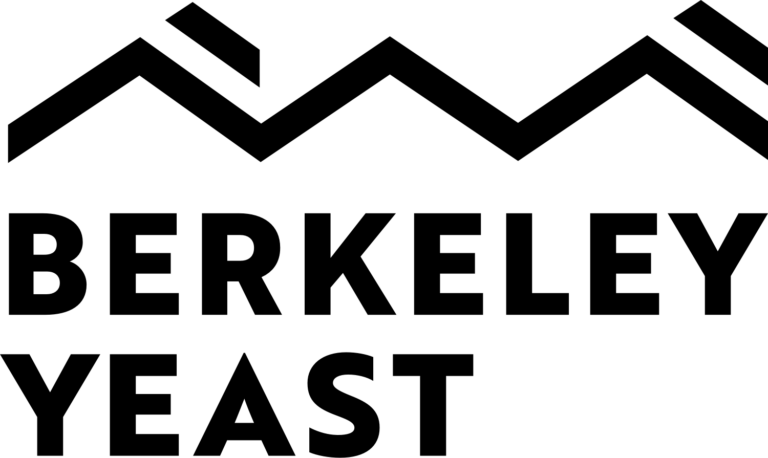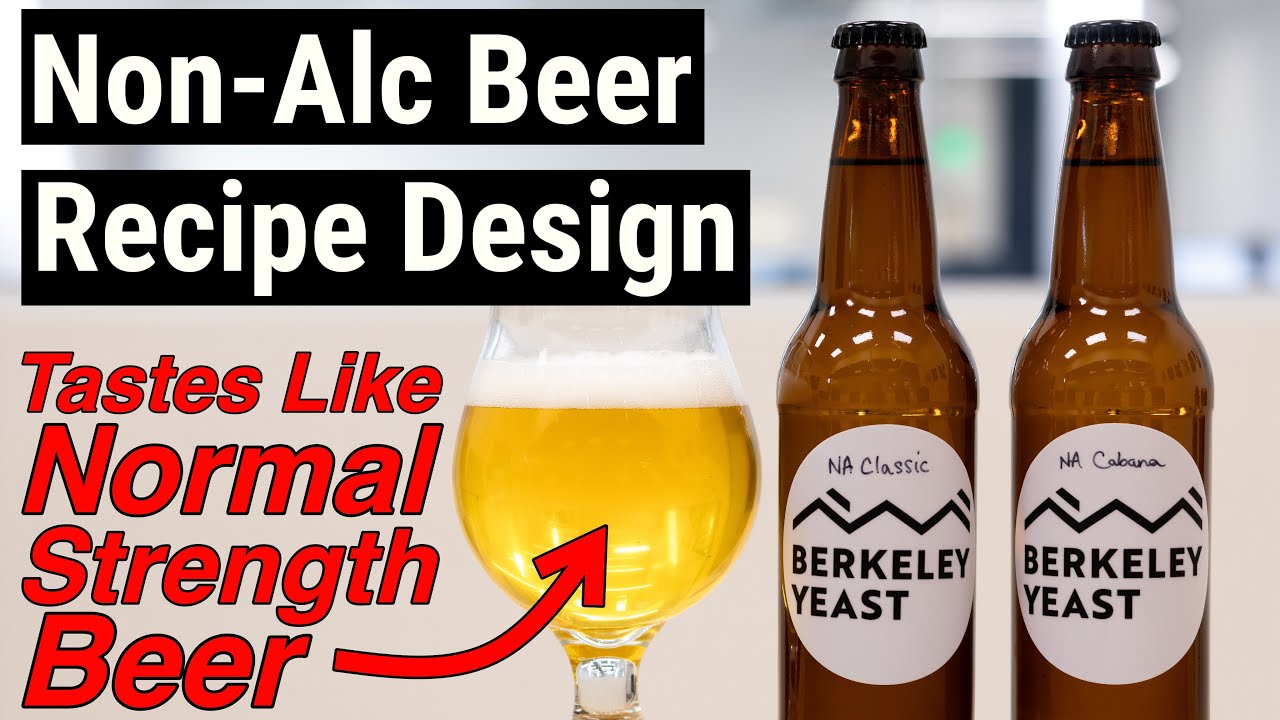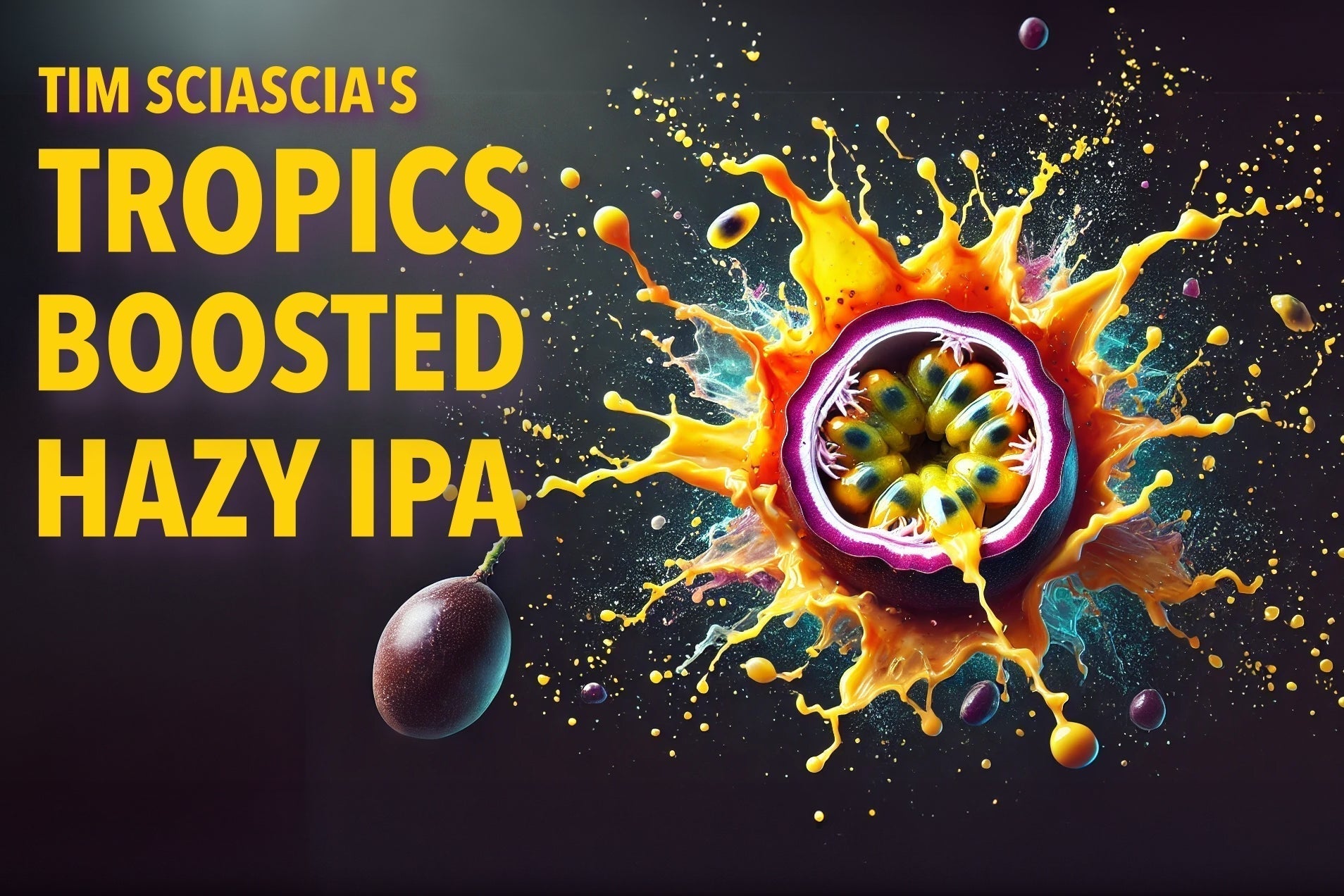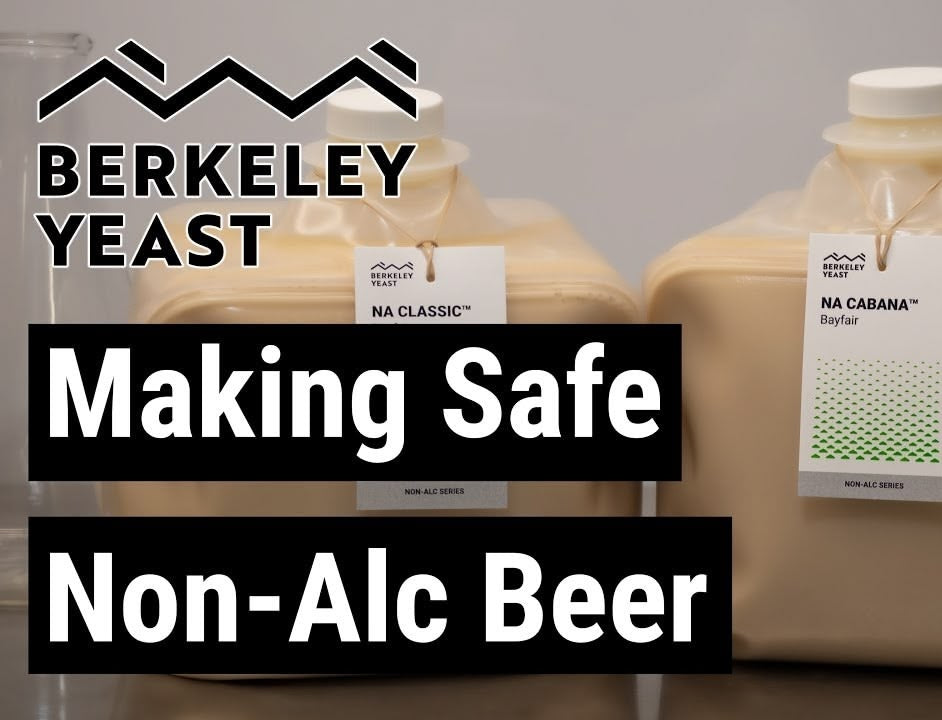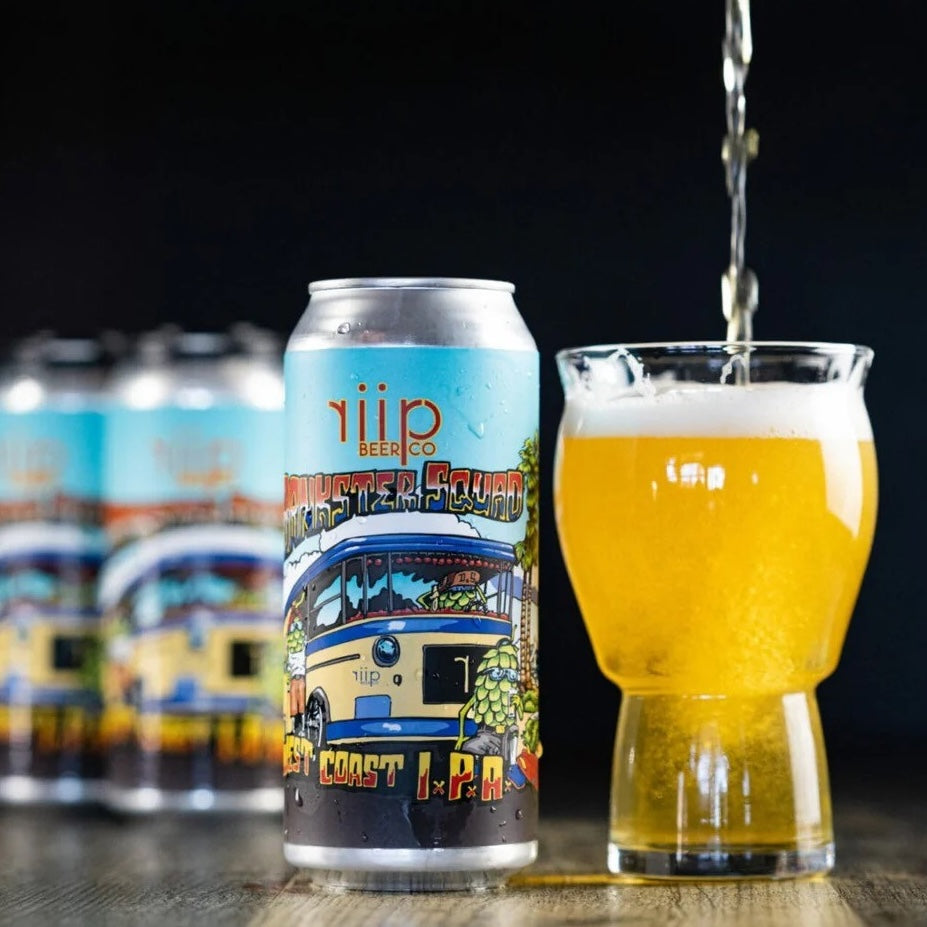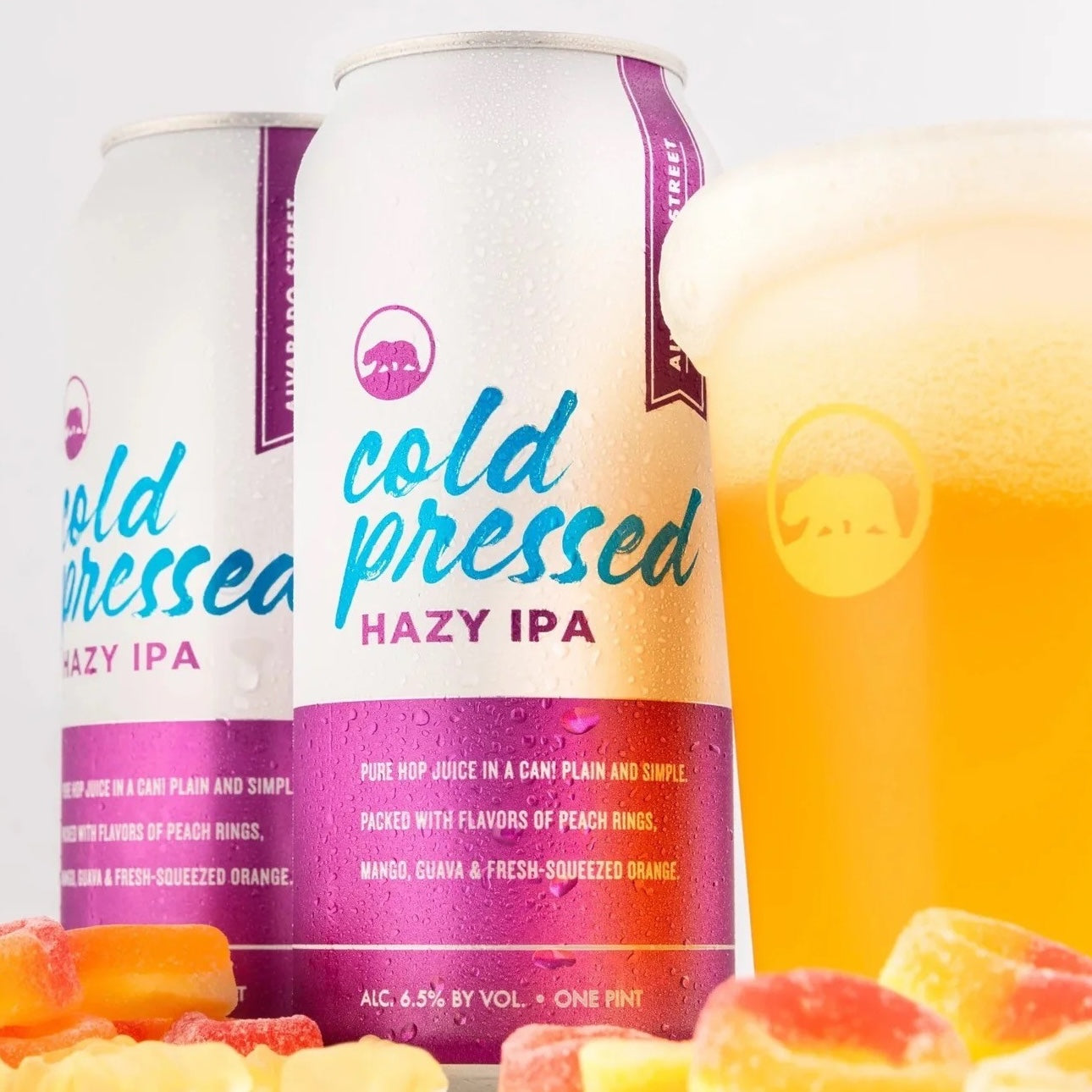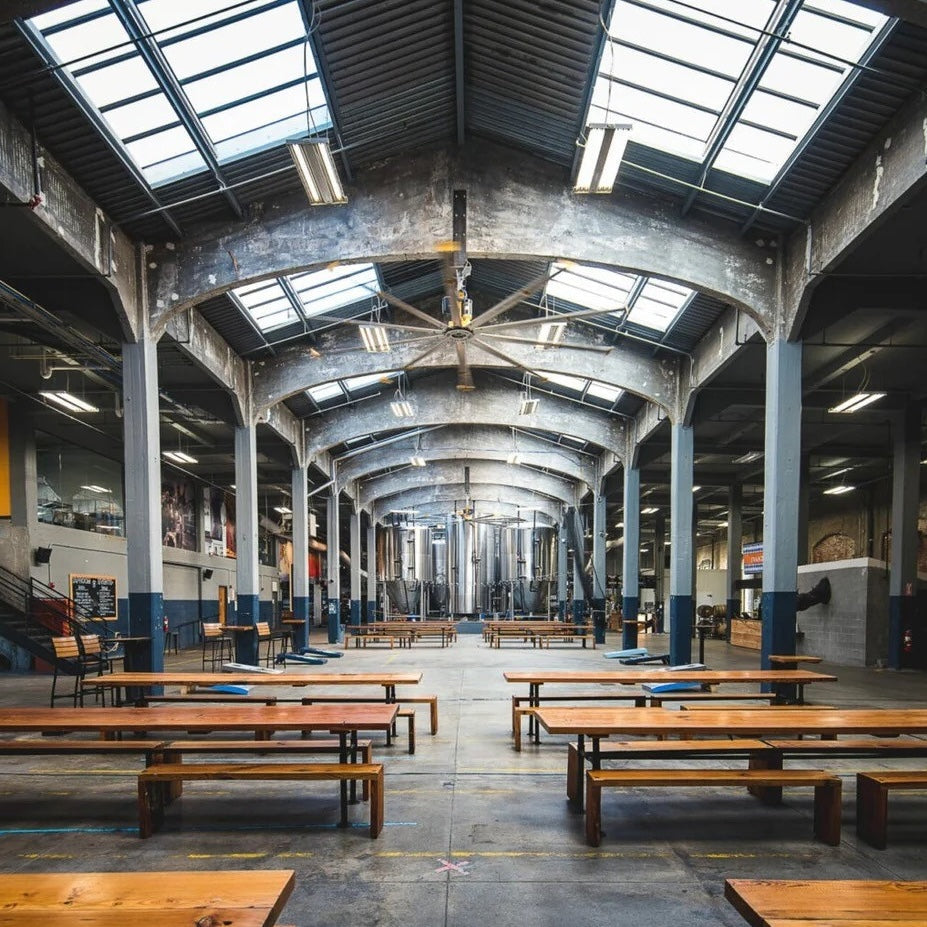Looking to lower costs on your Hazy IPA but not at the expense of aromatic potency? This recipe relies on a heavy dose of Berkeley Yeast’s Tropics Boost and fermentation with Tropics London yeast strain for an attention grabbing bouquet of passionfruit. The combination of our yeast and Tropics Boost allow for a reduced hop load yet provide an amplified tropical aroma the likes of which no hop could give you. Eliminating 1.5 lbs per barrel of dry hops by substituting Tropics Boost could save you around $10 per barrel!
Stats
OG Before Sugar (after boil off): 14P
OG After Sugar: 17P
FG: 4.0
Target ABV: 7.1%
Grist
50% North American 2 row
20% Maris Otter
15% White Wheat
15% Dextrin Malt
Sugar
1.5 Plato worth of Dextrose
1.5 Plato worth of Brewers Crystals
Water Chemistry
60g/bbl Calcium Chloride
30g/bbl Sodium Chloride
Mash
Mash 149°F
Target mash pH: 5.45
Hops
Target 35 IBU
Simcoe for bittering if needed to hit 35 IBU
Cool WP: 1 lb/bbl Cascade or Amarillo (if you have a good lot)
Krush T90 - 1.5 lb/bbl Dry Hop
Yeast
250 mL/bbl Tropics Boost
Mashing, Lautering and Start of the Boil
Presuming you have very soft water: Add to the mash 60g calcium chloride per barrel. This will preserve your mash enzymes, help establish a proper mash pH and lead to a rounder mouthfeel. Adding sodium chloride to the kettle will further increase the softness. We choose NaCl over more CaCl to avoid adding too much calcium which results in a chalky sensation. Add acid as needed to achieve the proper mash pH.
Vorlauf until the wort runs fairly clear and free of grain particulate. Turbidity at this point will do more harm than good as astringency can be extracted from grain particulate during the boil. Get your haze from your hops and yeast!
You may need to acidify your sparge water to prevent your last runnings pH from going above 5.8. This is to further prevent extraction of astringency from the grain.
Boil for 60 minutes or more depending on how vigorous your boil is. Add in the sodium chloride and any additional acid to achieve a final wort pH of 5.2. Your whirlpool hops will raise the pH of the wort so you will want to undershoot the pH a little.
Hot Side Hopping
At the end of your boil, if possible, bring down the temperature of your wort to 180F. Two common techniques for achieving this is boiling a concentrated wort and then adding cold liquor or city water at the end of the boil; or you can recirculate the wort through the heat exchanger. After the temperature is lowered, add the Cascade or Amarillo to the whirlpool.
Fermentation and Tropics Boost
Chill your wort to 65°F, aerate to 10ppm, pitch your Tropics London at 750k cells per mL per °P, and set your tank to 68°F. Tropics London does not have Berkeley Yeast’s low diacetyl Fresh™ technology so you may want to consider adding ALDC enzyme at some point throughout the brewing or cellaring process.
Add 250mL per bbl of Tropics Boost into the fermentor while transferring into the tank. The following day you are going to notice the distinct aroma of passionfruit accompanying the fermentation gases. That is the technology of Tropics and Tropics Boost at work. It is transforming previously aromaless compounds into pure tropical amazingness!
Dry Hopping
At the end of fermentation, remove the yeast to the extent possible and then dry hop with 1.5 lbs per bbl of Krush T90. The following day rouse the hops vigorously from the bottom of the tank for 2 minutes. The next day remove the hops and continue to do so once a day until packaging. When the beer has passed a forced diacetyl test, crash the tank to 32°F.
Final Touches
A not required but fun way to adjust this recipe is to lower the pH with food grade acid to enhance the tropical character. The Tropics London and Boost creates so much passionfruit aroma that a slightly lower beer pH can make the passionfruit pop more on your palate.
Carbonate to 2.6 volumes. Allow at least 48 hours, more is better, for further settling of yeast, hops and trub before you package the beer.
